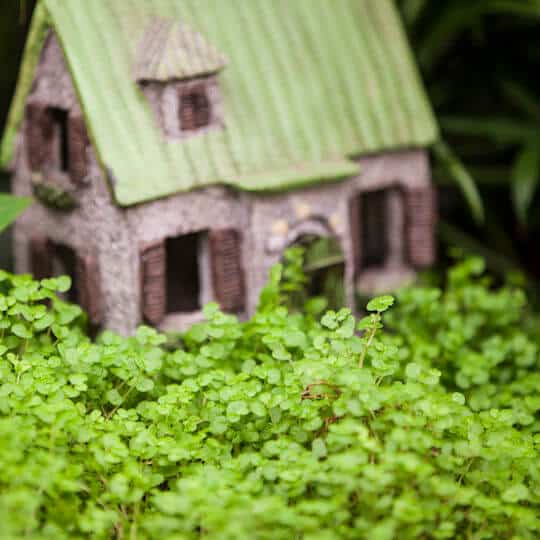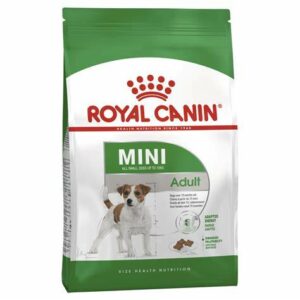Plants for small gardens
DIY and how-to

Gardening in a limited space offers exciting possibilities and challenges.
The move towards smaller gardens has created exciting new landscaping and planting challenges. The design of a townhouse or small garden is not only about making a small space appear larger, it is also about providing facilities to suit the owner’s lifestyle. Privacy may be a top priority, or a space may be needed as an entertainment area, the design may need to incorporate a play area for children, or provide easy and safe walking for the infirm.
A simple design, strong structure, and attention to scale is essential. In a small garden, where every plant must justify its place, only the choicest varieties should be grown. Don’t be tempted to over-plant in the beginning, or you will have to cut back or remove plants that have outgrown their space within a few years.
The choice of plants depends on altitude, temperature, aspect, soil type and rainfall. Every garden, whatever the size, has places that are warmer or colder, sheltered or more exposed. These microclimates can be used to advantage to grow a greater variety of plants.
Shade cast by buildings, trees or large shrubs, whether in your own or adjoining properties, should be taken into account. Make use of ‘borrowed’ plant shade, but never rely on it. Avoid planting tall evergreens on the north side of the garden, as these will block out welcome winter sunshine.
Trees for small gardens
Trees suitable for small gardens must have a non-invasive root system. Evergreens will retain interest throughout the year, but what is not always remembered is that evergreens shed leaves throughout the year, unlike deciduous trees that shed their leaves within a few weeks and let in the winter sun.
- Tree wisteria (Bolusanthus speciosus) 7m x 4m, has a slender, erect shape, attractive bark and lilac-blue flowers in spring.
- Lavender tree (Heteropyxis natalensis) 6m x 5m, has lavender scented foliage when crushed, attractive bark, and a narrow growth habit. Foliage turns red in autumn.
- Forest bushwillow (Combretum kraussii) 7m x 4m, autumn foliage and a shady canopy in summer.
- Japanese maple (Acer palmatum) has dainty foliage and rich autumn colour. Suitable for inland gardens.
- Tree fuchsia (Halleria lucida) grows 5m tall. Birds are attracted to the nectar-rich orange-red blooms and berries.
- Wild olive (Olea europaea subsp. africana) grey-green leaves, grows 6m tall and is water wise. Suits an indigenous and a Mediterranean style garden.
- Pompom tree (Dais cotinifolia). A fast-growing evergreen tree with a height and spread of 5m x 3m. It bears clusters of pink flowers in summer.
- White karee (Searsia pendulina syn. Rhus pendulina) 7m x 5m is a water wise, evergreen to semi-evergreen tree with a graceful growth habit, willow-like leaves and sprays of tiny greenish-yellow flowers.
- The ‘Meyeri’ lemon tree has a compact growth habit and bears juicy, smooth skinned fruit most of the year.
Shrubs for small gardens
Concealing parts of a garden with evergreen shrubs can make a small garden appear larger.
- Abelia grandiflora with plain green leaves or variegated ‘Francis Mason’ have arching stems and tiny white bell-shaped flowers.
- Wild pomegranate (Burchellia bubaline) has glossy green leaves and clusters of bright orange tubular flowers loved by sunbirds.
- Mexican orange blossom (Choisya ternata) bears glossy green, fragrant foliage and scented white flowers in spring.
- Kingfisher daisy (Felicia amelloides) is a small shrub with blue daisy-like flowers throughout the year that is ideal for mass planting.
- Freylinia tropica has an upright growth habit and small leaves. Delicate white or mauve flowers attract butterflies.
- Sacred bamboo (Nandina domestica) and the dwarf cultivar ‘Pygmaea’ have bamboo-like stems and fern-like leaves that assume red shades in winter.
- Mickey Mouse bush (Ochna serrulata)has bright yellow flowers and colourful new spring growth that changes to glossy green. Flowers are followed by red calyxes holding black fruits that resemble a Mickey Mouse face.
- Polygala fruticosa is a small rounded shrub that bears purple-pink flowers in summer. Butterflies love the flowers.
- Australian rosemary (Westringia fruticosa) is an extremely hardy shrub with needle-like grey-green leaves and tiny flowers.
Plants for lollipops
Plants for lollipops should be able to take regular clipping. Their foliage should be small and grow all the way along the stem, not just at the tip, otherwise bare stems will be seen when cut back. Abutilon, anisodontea, brunfelsia (yesterday-today-and-tomorrow), Choisya ternata, Duranta ‘Sheena’s Gold’, euryops, Freylinia tropica ‘Blue Splash’, Murraya exotica, Polygala myrtifolia, Solanum rantonetti and westringia can all be trained as lollipops.
Box (Buxus sempervirens), Abelia ‘Dwarf Gnome’ with green foliage, and Abelia ‘Confetti’ with cream and pink variegated leaves, dwarf eugenia (Syzigium paniculatum ‘Globosum’), Carissa macrocarpa ‘Green Carpet’ and Myrtus communis ‘Nana’ can be clipped as low hedges, or grown as clipped balls at intervals along paths as a contrast to informal plantings. Cuphea ‘Lemon & Ice’ with lime yellow foliage and white flowers, and Cuphea ‘Lemon Squash’ with yellow-green and pink-purple flowers, make neat edgings.
Grasses
Grasses and grass-like plants are low maintenance and introduce a contrast in texture.
- Mondo grass (Ophiopogon spp.) is excellent as a filler between stepping-stones and sleeper steps. O. ‘Black Dragon’ contrasts well with grey or variegated plants.
- Carex forms tussocks and mounds and Carex ‘Frosty Curls’ and Carex ‘Bronze’ are most effective when planted in groups, or edging paving.
- Festuca glauca is clump forming with narrow grey-blue foliage. Festuca ‘Golden Toupee’ has lemon foliage that darkens to yellow in winter.
Tall feathery grasses introduce movement into the garden and combine well with perennials such as agapanthus, gerbera, day lilies and the wild iris, Dietes grandiflora. Chlorophytum saundersiae is a grass-like plant with evergreen narrow leaves that bears masses of tiny star-like white flowers throughout the year.
Perennials
Perennials can play an important role in garden landscaping, where they are valued for their colour, longevity and reliability. The following perennials give great value:
- Agapanthus – its root system is excellent for holding soil on slopes. Grow in broad sweeps in the landscape, in borders, and in large pots. Dwarf varieties are suitable for edging paths.
- Alstroemeria – choose cultivars that have a compact growth habit and do not need staking. Because of their long flowering season throughout summer and into autumn, these tuberous rooted perennials deserve garden space.
- Day lilies (hemerocallis) – provide a dazzling display from early summer well into autumn. Grow between shrubs and in the border. Even when not in bloom, the graceful arching leaves of evergreen varieties are attractive.
- Gaura lindheimeri – dainty pink and white butterfly-like flowers are held on tall wiry stems, and are best grown in clusters in full sun. Can withstand heat and drought.
- Hellebores – are among the first flowers to appear in winter. They are able to withstand cold and frost. Grow in dappled or semi-shade in enriched soil.
- Limonium perezii – This giant statice, with umbrella-like heads of violet-blue and white flowers held on sturdy stems, is drought resistant.
- Salvia farinacea ‘Victoria’ – a neat, clump-forming plant with upright flower spikes of indigo-blue flowers. Mixes equally well with white, pastel, or brightly coloured flowers. Plant in groups.
- Bulbine frutescens – a water wise, clump-forming plant with grass-like succulent foliage and yellow or orange flowers. A great ground cover for hot areas.
Annuals
Seasonal annuals can be massed, or used as fillers among permanent plantings to provide instant colour. Those with a trailing habit (alyssum, lobelia, verbena) will soften the edges of containers, window boxes and hanging baskets.
Pastel colours found in aster, Bellis perennis, (English daisy), bedding begonia, dianthus, impatiens, nicotiana, petunia and phlox particularly suit small gardens, where they will create an illusion of more space, and appear to add greater depth to a shallow border.
Orange and yellow marigold, calendula, poppy, nemesia and gazania are warm and welcoming at the entrance and on the patio, while mauve and purple cineraria, pansy, and primula introduce subtle depth and shadows in the garden.
You might also like
Shop online
-
- Sale!
MINI ADULT 2KG
- Original price was: R348.99.R279.19Current price is: R279.19.
- Add to cart Learn More




